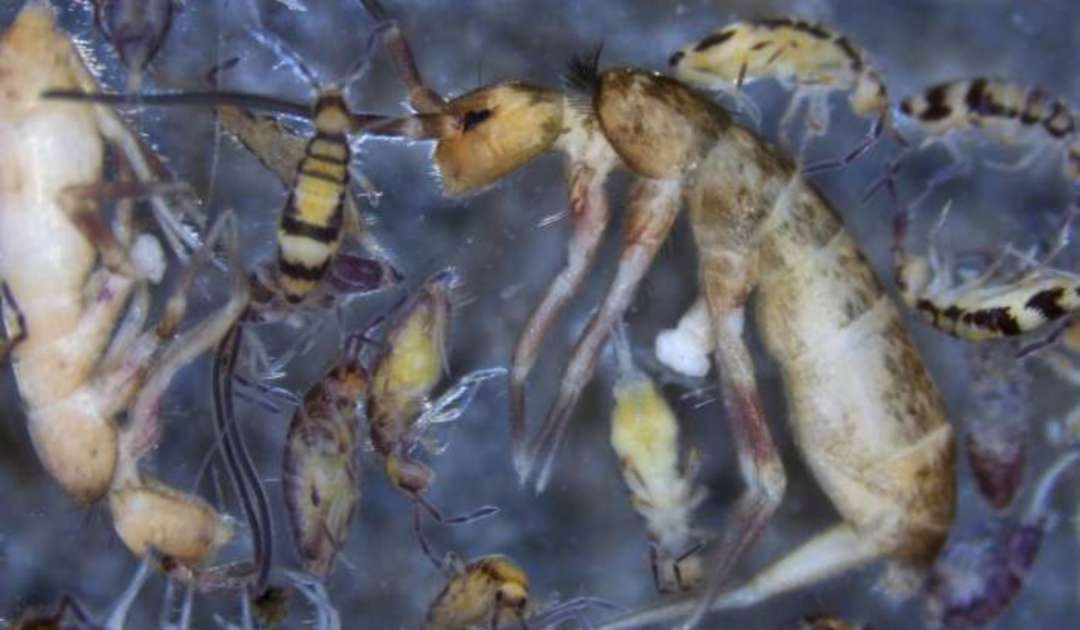
Project: “CollembolAI”: Computer vision applied to soil mesofauna.
We are adapting computer vision approaches to assist the analyses of soil mesofauna communities and to assists with the digitization of vast collection of tiny animals in ethanol, such as the Collembola and Protura specimens that make up the majority of the Apterygota collection in Senckenberg Görlitz.
We develop an automatic macrophotography platform to capture the content of petri dishes in high definition. We also develop a deep-learning application to assist in the creation of object-detectors and classifiers that can automatically count and classify the animals on pictures (https://github.com/stasys-hub/Collembola_AI).
CollembolAI is under active development. We aim at creating machine-learning models that will recognize the major groups of Collembola (being our core expertise) but also the major groups of soil invertebrates. We also aim at bringing computer vision and molecular techniques together in order to create an efficient pipeline to characterize soil communities species diversity, species abundances and biomass, and species morphology.
CollembolAI is developed in collaboration with Stanislav Sys, Stephan Weißbach and Prof. Dr. Susanne Gerber, Institute of Human Genetics, Johannes Gutenberg-University Mainz
Contribution to cross-section projects
Completed research topics of the section
Long-term studies on the springtail fauna of the Harz Mountains (PR III)
From 14th to 18th of October 2016 soil and moss samples were taken again from a total of 17 sites of the Harz. All samples were selected using an expedition Berlese device. In the foreground of these investigations stood 2 bolder fields and sites in older deciduous forests. The determination of the whole material will start in January 2017.
Contribution to the knowledge of Collembola from the Canary Islands
In the seventies and eighties of the last century Arne Fjellberg und Willem N. Ellis collected springtails within many locations of the Canary Islands. They mainly took mosses of rocks, litter layers or netted from vegetation (e. g. meadows). A part of these collected springtails samples Dr. Fjellberg gave kindly our section Apterygota. These undetermined materials were and will currently determine.
Within the Fauna Europaea (last update 29 August 2013) 103 (sub) species are listed for the Canary Islands. Already the first determinations yielded some new records; e. g. Sminthurus hispanicus Nayrolles, 1995, Desoria trispinata (MacGillivray, 1896) and Caprainea bremondi (Delamare Deboutteville & Bassot, 1957). Remarkable is also the again record of Mesogastrura libyca (Caroli, 1914) from Tenerife.
Continuation of long-term studies on Collembola fauna in bogs
Samples of the Dubring bog from 2012 were determiniert. These samples resulted in altogether 50 species. Besides of many hydrophilic species three tyrphobiotic species were found (Ceratophysella scotica (Carpenter & Evans, 1899), Neelides minutus (Folsom, 1901) and Pachyotoma crassicauda (Tullberg, 1871)).
Furthermore the examination of extensive samples from the Sernitz bog project of Dr. Ricarda Lehmitz (Section Oribatida ) started. With Neelides minutes and Pachyotoma crassicauda also two tyrphobiotic species were already recorded. Above all 4 collecting dates were analyzed (July, October 2013, November 2015 and April 2016). Within these samples 49 species were found (7419 specimens).
Strict forest reserves in Hesse study of the Collembola fauna of the forest reserve “Locheiche”
The forest reserve ‘Locheiche’ is a part of the national park ‘Edersee-Kellerwald’. This region is characterized by old large-scale beech forests. The soil and moss samples (more than 100 of nearly 50cm3 volumes) were taken in March, May and September 2009 within a grid-based sampling design of the Locheiche woodland.
Nearly 10 000 specimens were collected and resulted in 44 species (preparation and determination from May to July 2016). The majority of the recorded species are eurytopic, but also some typical forest inhabitants were found (e.g. Desoria violacea, Lipothrix lubbocki, Micraphorura absoloni and Willemia denisi). Furthermore characteristic dwellers of moss/lichens on rocks and trees were found: Anurophorus laricis, Pseudisotoma sensibilis and Xenylla boerneri. Most frequent within the soil samples were Mesaphorura macrochaeta and Parisotoma notabilis.


